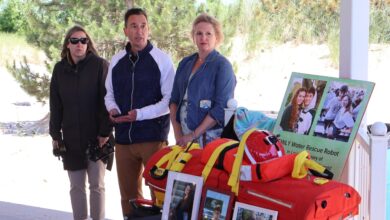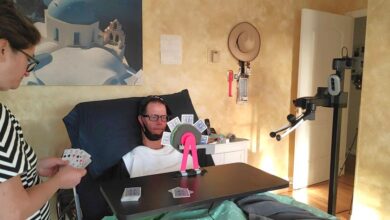VNS tooling up for robotics

Partnering with the supplier to adapt off-the-shelf software is opening up an accelerated development timeline for Veolia Nuclear Solutions as it works on an advanced remote tele-manipulator to support decommissioning of Fukushima. It’s an approach that allows VNS to focus on its core skills yet still leverage digital tooling.
A part of Veolia Group, Veolia Nuclear Solutions (VNS), announced a collaboration agreement to deploy the Siteflow platform to support the design, execution, and functionality of its remotely operated systems. In particular, Siteflow software will be employed by VNS UK to facilitate the testing of their latest robotic arm.
Designed for nuclear maintenance, this is a second-generation teleoperated articulated arm and will build upon the outcomes of its predecessor, which is already undergoing final testing in Japan. It is expected to be a pivotal component in the future decommissioning of the Fukushima nuclear plant. VNS has been involved in work at Fukushima since October 2014 where its role includes the design and construction of long-range robotic arm systems to inspect the primary containment vessel of Unit 2. The system has a reach of more than 21 metres and its first task will be to deploy radiation and 3D sensors in locations inaccessible to humans. It will complete this through a single narrow opening in the containment vessel.
After a rigorous two-year testing programme, operational on-site deployment of this first robotic arm is scheduled for later this year.
VNS will be using Siteflow to plan and record the testing and operation tasks for the second robotic arm, which will be used to test the deployment of tools to retrieve physical samples of the fuel debris. This second robotic arm will build upon the design of its predecessor. This more advanced system is due for deployment once initial investigation works are complete.
Simon Delavalle, Veolia Nuclear Solutions Deputy Chief Technical Officer, explains the origins of the tie in with Siteflow: “We developed something similar internally as a version of a software we needed. The use case for us is to use data capture and instructions capture for the operation of remote machinery. We want people in a control room to be able to follow a very qualified set of instructions for the operation of complex machines. It’s not about working on the site; it’s about working in the control room.” He continued: “All the functions that we were looking for about document control, security, quality control were already in the Siteflow software. We just had to tweak them, so it was relevant to the way we conducted operations on these machines. For us it was interesting because it’s not specific to Fukushima, it’s specific to the type of projects we do.”
The Siteflow platform is more typically used as a workflow tool that supports repeatable functions that are consistent while recording progress and making sure that all the safety elements are complete. However, in this case the repeatability aspect was not required. “A lot of these projects we’re doing are one off or sometimes only one operation. During the preliminary studies, during testing and training, with this tool we can make sure that the data that we give the operators of the machine in that critical environment has been qualified. So it is that traceability and that continuity of the data review that is important, as well as the security and the confidence,” says Delavalle, adding that the key is “training the staff on developing the solution as we go along during the projects. This is a methodology that we’ve been using for the last 25 years. It just happened that Siteflow developed a professional tool that was qualified and that we could tweak.”
Having assessed the Siteflow software, Veolia decided not to continue with their in-house software development. “We’re not a software developer. We don’t want to sell software. What we did is create a tool that we needed, but if someone does it better than us, more sustainably and more robustly then that’s the tool we want to find on the market,” says Delavalle. However, he emphasises the considerable efforts undertaken by VNS to ensure this approach was the right one. “It was quite a long search and it was not a five minute decision. We engaged with Siteflow probably two years ago because we are always looking for the most appropriate tools on the market that we can use to replace the things we don’t want to make. There was discussion about the capability of the software and Siteflow responded to all the queries we had about document control, security robustness reviews and so on. And they have worked with us to not only adapt the tools, but to make sure the tools respond to the requirements we set at the beginning related to the way we work and the way we want to use the tool.”
At the heart of the software’s functionality is its capacity help guide staff through a process, even though it’s a unique operation, as Delavalle explains: “For us, it is about using the tool sometimes for one off operations, but making sure that all the steps of development and testing are intuitive in the way that these operations are described in the Siteflow tool. Also to make sure Siteflow is used to develop instructions and are mapped across our design development work. This is so that, as we go through projects, the different instructions that have been developed during design, or during tests or prototyping are mapped so that tweaks actually happen.”
He explains how this approach has supported development of the manipulators: “The robot arm currently utilising Siteflow has undergone development, including design upgrades and manufacturing assembly as part of this project phase. While we’re replacing tools previously used in another project, it’s important to note that these changes aren’t exclusive to the robot arm.”
He also notes that the arm currently deployed at Fukushima is not using Siteflow and there are currently no plans to use the platform there either. “We already have an arm in Japan that has undergone testing near Fukushima for potential deployment. This arm, known as the investigation arm, is capable of characterising and mapping the environment. Additionally, we are in the process of constructing a second arm for sampling and retrieval purposes. The VNS team is using Siteflow to plan the testing for this project. Once completed, this arm will also be sent to Japan, where it will serve as a prototype on a development platform for our clients’ future sampling technologies.”
Commenting on the project, Louis Hauvette, Siteflow Co-Founder and CEO, observes: “What’s interesting with this use case is that it is really proving the point that Siteflow is a fully compatible and flexible platform. This is why we like to work with our customers within partnerships where we can help them find new use cases and adapt the product to fit the new demands of their customers. We’ve begun on this first use case with Veolia but there’s a lot of other use cases we are currently talking about to pursue this path of digitising most of their field operations.”
Delavalle says: “Siteflow remains a key supplier for us, and our collaboration with them is highly integrated into our work processes. We selected Siteflow because they exhibited flexibility for future endeavours, an area we aim to explore further. While our current project is focused on robotics, we are already discussing additional use cases with another significant aspect for our robotics team being digitalisation.” He concludes: “We are keen on leveraging various software tools to enhance value beyond individual capabilities, and Siteflow is integral to gathering historical data on operational machinery and maintenance requirements, complementing our existing tools. Ensuring data continuity is paramount, as we integrate with internal legacy systems, other digital tools, and stakeholders such as customers, suppliers, and core partners. At Veolia,
we prioritise innovation, and Siteflow can help guide our engineering teams and operators in developing and operating equipment, particularly at critical sites like Fukushima.”





